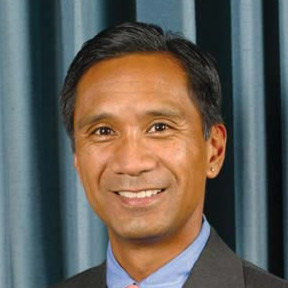The U.S. Army’s chief of staff, Gen. Peter J. Schoomaker has admitted what many military analysts have been saying for some time now: the active duty Army “will break” as a result of the Iraq deployment. But with roughly a half million men and women in the active duty Army, how is it that 152,000 troops currently deployed in Iraq could push the Army to the brink? The answer lies in troop rotations.
The requirements of maintaining a professional volunteer military means that the troops in Iraq must eventually be relieved by fresh troops. If deployments are excessively long or result in being away from home and family too frequently, the risk is soldiers deciding that a military life is too much of a hardship on themselves and their families—resulting in exodus rather than retention. For an all-volunteer force, the rule of thumb for retaining soldiers over time is a 3:1 rotation ratio (meaning three total units are needed to keep one unit deployed) for active duty forces. So the 152,000 troops in Iraq requires an additional 304,000 for rotation or a total of 456,000 soldiers—which is precariously close to the total size of the active duty Army. Moreover, the U.S. Army has another 64,000 troops deployed overseas, which, to be sustained, requires a total of 192,000 troops. Simple math adds up to the Army being almost 150,000 troops short of being able to sustain current deployments.
As a result, the Pentagon has used the National Guard and Reserves to backfill the shortfall. As of December 13, 2006, more than 77,000 members of the Army Reserve and National Guard are currently mobilized (that number has been as high as 163,000) and account for as much as 40 percent of the force in Iraq. Since 2001, 350,000 National Guard and Reserve soldiers have been called to active duty—more than were cumulatively mobilized since the Cuban Missile Crisis (including the Vietnam War, the Cuban refugee crisis, Haiti, Bosnia, Kosovo, and Desert Storm). But using Reserves and National Guard has its own rotation problem. For part-time soldiers, the rotation ratio needed to keep them enlisted is between 7:1 and 9:1. Using 8:1 as an average, the current mobilization requires a total force of 616,000 citizen soldiers—which exceeds the size of the Army Reserve and National Guard force.
The strains of the Iraq deployment have forced the military to resort to a backdoor draft. First, deployments have been extended to keep troops in Iraq for longer than their normal rotation. Second, the use of stop-loss orders prevents soldiers from leaving the military when their terms of enlistment expire. Finally, the military is using involuntary recall to force reservists back into active duty. But a backdoor draft may not be enough, particularly since Gen. Schoomaker has called for expanding the Army by 7,000 or more troops a year.
So it’s impossible to ignore or dismiss that in November 2006 Representative Charles Rangel (D-NY) stated he would reintroduce a bill in January 2007 to reinstate the draft. According to Rangel, “If we’re going to challenge Iran and challenge North Korea and then, as some people have asked, to send more troops to Iraq, we can’t do that without a draft.” However, unlike the Selective Service during the Vietnam era, Rangel is calling for mandatory universal—not military—service. His previous bill, H.R. 163 (introduced in January 2003), would have required “all young persons in the United States, including women, perform a period of military service or a period of civilian service in furtherance of the national defense and homeland security, and for other purposes.”
But the only reason for a draft is if the nation is engaged in a war of national survival, such as World War II (in which case, troop rotation would not be an issue and we would field as many troops for as long as necessary until victory was achieved). However, the war in Iraq is clearly not World War II. In fact, Iraq was neither a military threat to the United States nor a terrorist threat, al-Qaeda or otherwise. Instead of talking about increasing the size of the Army and raising the ugly spectre of a draft to sustain the deployment in Iraq, we should be talking about getting U.S. troops out of Iraq.







